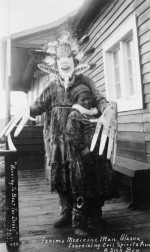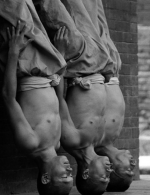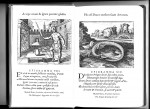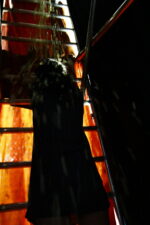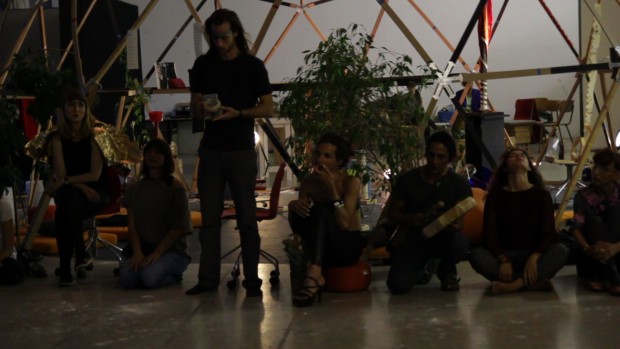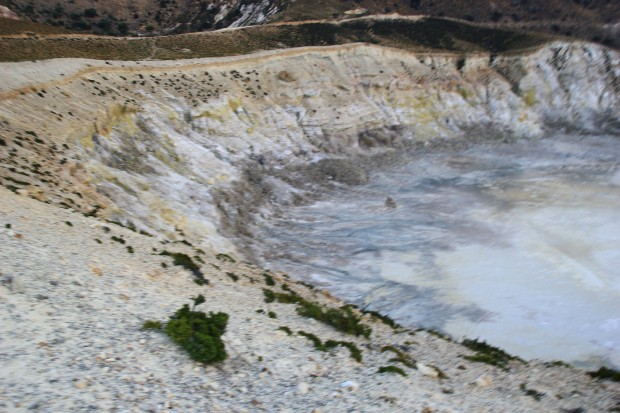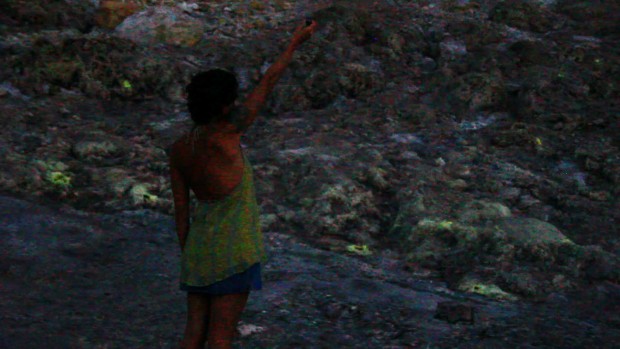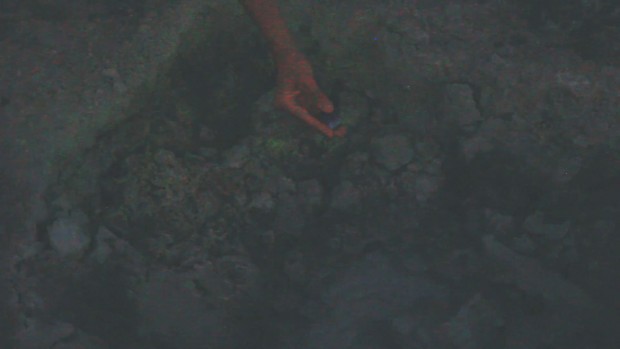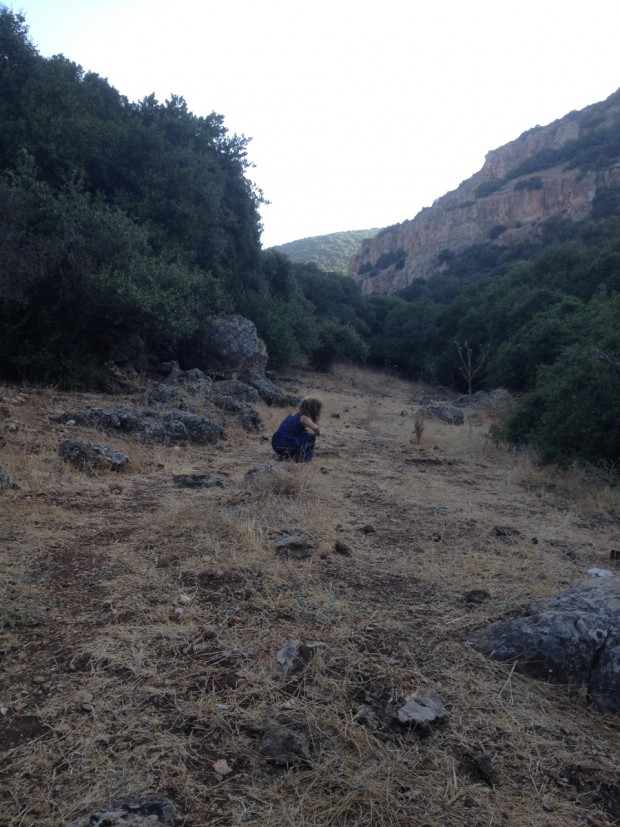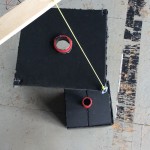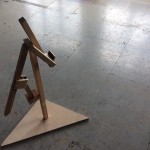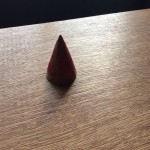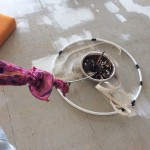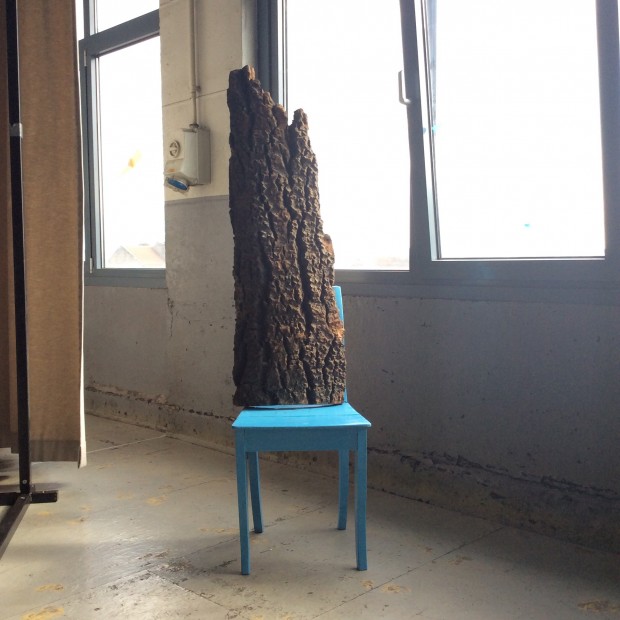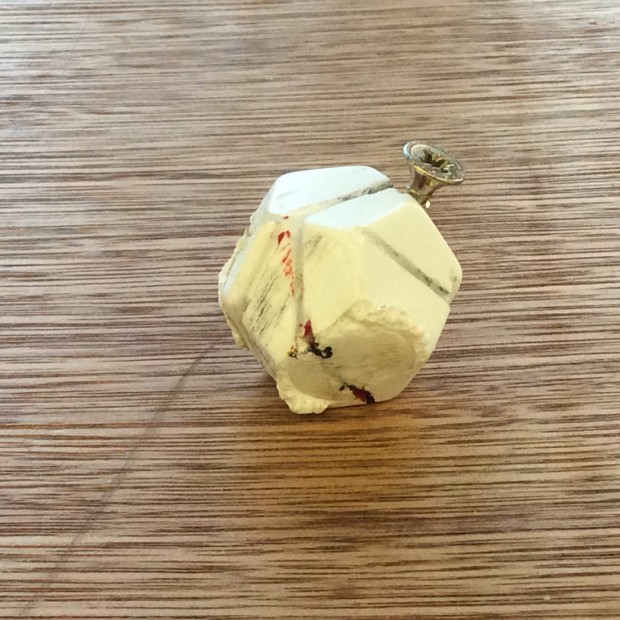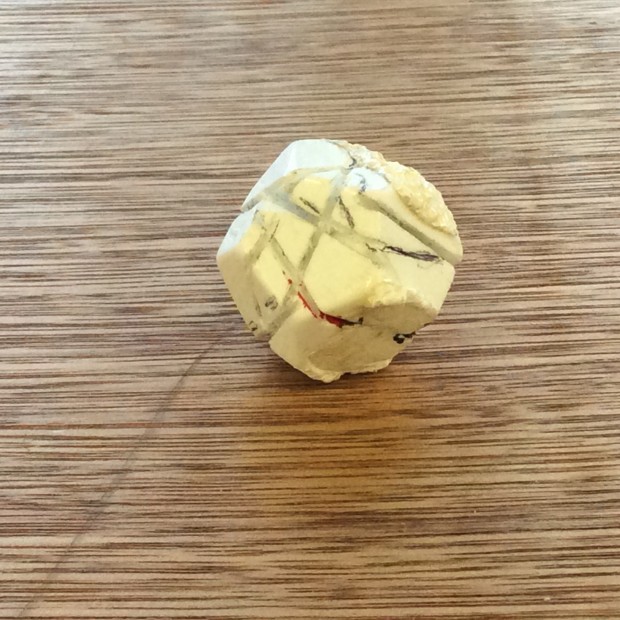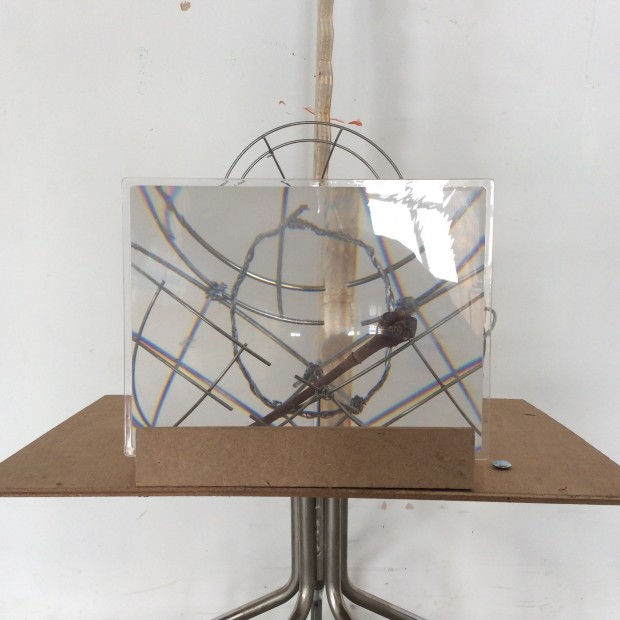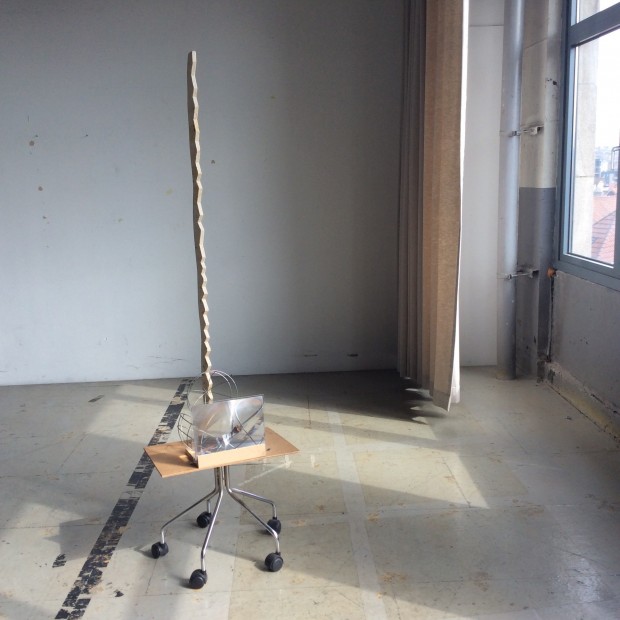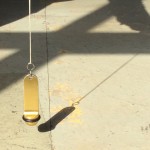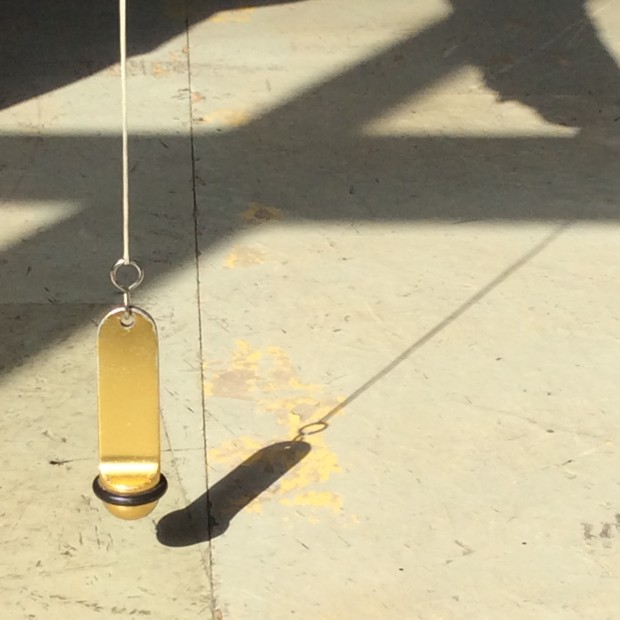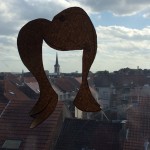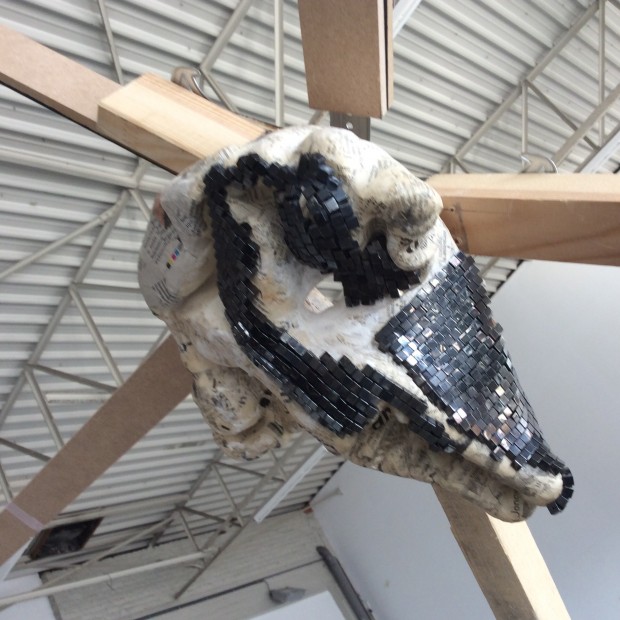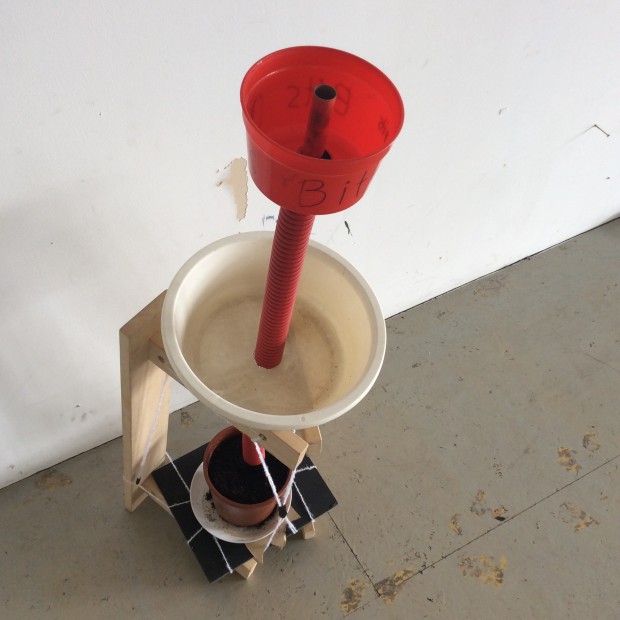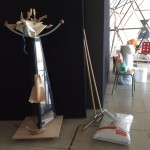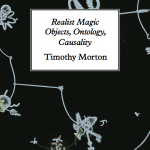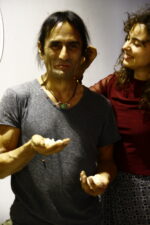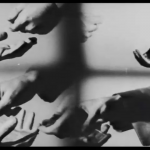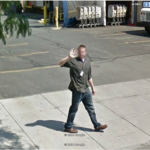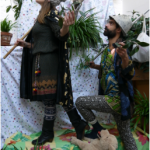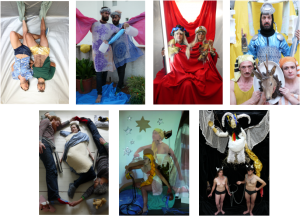I would like to start with a recapitulation of the substantive points made last Tuesday. The purpose of these lectures is to follow the implications of Amerindian "perspectivism": the conception according to which the universe is inhabited by different sorts of persons, human and non-human, which apprehend reality from distinct points of view. This conception was shown to be associated to some others, namely:
(1) The original common condition of both humans and animals is not animality, but rather humanity;
(2) Many animals species, as well as other types of "non-human" beings, have a spiritual component which qualifies them as "people"; furthermore, these beings see themselves as humans in appearance and in culture, while seeing humans as animals or as spirits;
(3) The visible body of animals is an appearance that hides this anthropomorphic invisible "essence," and that can be put on and taken off as a dress or garment;
(4) Interspecific metamorphosis is a fact of "nature" - not only it was the standard etiological process in myth, but it is still very much possible in present-day life (being either desirable or undesirable, inevitable or evitable, according to the circumstances);
(5) Lastly, the notion of animality as a unified domain, globally opposed to that of humanity, seems to be absent from Amerindian cosmologies.
Let us go back to the conception that animals and other ostensibly non-human beings are people.
Animism, or the projection thesis
You will have probably noticed that my "perspectivism" is reminiscent of the notion of "animism" recently recuperated by Philippe Descola (1992, 1996) to designate a way of articulating the natural and the social worlds that would be a symmetrical inversion of totemism.[37] Stating that all conceptualisations of non-humans are always "predicated by reference to the human domain" (a somewhat vague phrasing, it should be said), Descola distinguishes three modes of "objectifying nature":
(1) Totemism, where the differences between natural species are used as a model for social distinctions, that is, where the relationship between nature and culture is metaphorical in character and marked by discontinuity (both within and between series);
(2) Animism, where the "elementary categories structuring social life" organize the relations between humans and natural species, thus defining a social continuity between nature and culture, founded on the attribution of human dispositions and social characteristics to "natural beings";
(3) Naturalism, typical of Western cosmologies, which supposes an ontological duality between nature, the domain of necessity, and culture, the domain of spontaneity, areas separated by metonymic discontinuity.
The "animic mode" is characteristic of societies in which animals are the "strategic focus of the objectification of nature and of its socialisation," as is the case amongst indigenous peoples of America. It would reign supreme over those social morphologies lacking in elaborate internal segmentations; but it can also be found coexisting or combined with totemism, wherein such segmentations exist, the Bororo and their aroe/bope duality being such a case.
Descola's theory of animism is yet another manifestation of a widespread dissatisfaction with the unilateral emphasis on metaphor, totemism, and classificatory logic which characterises the Levi-Straussian concept of the savage mind. This dissatisfaction has launched many efforts to explore the dark side of the structuralist moon, rescuing the radical theoretical meaning of concepts such as participation and animism, which have been repressed by Levi-Straussian intellectualism.[38] Nonetheless, it is clear that many of Descola's points are already present in Levi-Strauss. Thus, what he means by "elementary categories structuring social life" - those which organise the relations between humans and natural species in "animic" cosmologies - is basically (in the Amazonian cases he discusses) kinship categories, and more specifically the categories of consanguinity and affinity. In La pensee sauvage one finds a remark most germane to this idea:
Marriage exchanges can furnish a model directly applicable to the mediation between nature and culture among peoples where totemic classifications and functional specializations, if present at all, have only a limited yield. (Levi-Strauss 1962b: 170)
This is a pithy prefiguration of what many ethnographers (Descola and myself included) came to say about the role of affinity as a cosmological operator in Amazonia . Besides, in suggesting the complementary distribution of this model of exchange between nature and culture and totemic structures, Levi-Strauss seems to be aiming at something quite similar to Descola's animic model and its contrast with totemism. To take another example: Descola mentioned the Bororo as an example of coexistence of animic and totemic modes. He might also have cited the case of the Ojibwa, where the coexistence of the systems of totem and manido (evoked in Le totemisme aujourd'hui) served as a matrix for the general opposition between totemism and sacrifice (developed in La pensee sauvage) and can be directly interpreted within the framework of a distinction between totemism and animism.
I would like to concentrate the discussion on the contrast between animism and naturalism, for I think it is a good starting point for understanding the distinctive stance of Amerindian perspectivism. I will approach this contrast, however, from a different angle than the original one. Descola's definition of "totemism" also deserves some comments, which I shall present for your consideration after contrasting animism and naturalism.
Animism could be defined as an ontology which postulates the social character of relations between humans and non-humans: the space between nature and society is itself social. Naturalism is founded on the inverted axiom: relations between society and nature are themselves natural. Indeed, if in the animic mode the distinction "nature/culture" is internal to the social world, humans and animals being immersed in the same socio-cosmic medium (and in this sense, "nature" is a part of an encompassing sociality), then in naturalist ontology, the distinction "nature/culture" is internal to nature (and in this sense, human society is one natural phenomenon amongst others). Animism has "society" as the unmarked pole, naturalism has "nature": these poles function, respectively and contrastingly, as the universal dimension of each mode. Thus animism and naturalism are hierarchical and metonymical structures.
Let me observe that this phrasing of the contrast between animism and naturalism is not only reminiscent of, or analogous to, the famous gift/commodity one: I take it to be the same contrast, expressed in more general, non-economic terms.[39] This relates to my earlier distinction between production-creation (naturalism) and exchange-transformation (animism).
In our naturalist ontology, the nature/society interface is natural: humans are organisms like the rest, body-objects in "ecological" interaction with other bodies and forces, all of them ruled by the necessary laws of biology and physics; "productive forces" harness, and thereby express, natural forces. Social relations, that is, contractual or instituted relations between subjects, can only exist internal to human society (there is no such thing as "relations of production" linking humans to animals or plants, let alone political relations). But how alien to nature - this would be the problem of naturalism - are these social relations? Given the universality of nature, the status of the human and social world is unstable, and as the history of Western thought shows, it perpetually oscillates between a naturalistic monism ("sociobiology" and "evolutionary psychology" being some of its current avatars) and an ontological dualism of nature/culture ("culturalism" and "symbolic anthropology" being some of its recent expressions).
The assertion of this latter dualism, for all that, only reinforces the final referential character of the notion of nature, by revealing itself to be the direct descendant of the theological opposition between nature and super-nature. Culture is the modern name of spirit - let us recall the distinction between Naturwissenschaften and Geisteswissenschaften - or at the least it is the name of the compromise between nature and grace. Of animism, we would be tempted to say that the instability is located in the opposite pole: there the problem is how to deal with the mixture of humanity and animality constituting animals, and not, as is the case amongst ourselves, the combination of culture and nature which characterise humans; the problem is to differentiate a "nature" out of the universal sociality.
Let us return to Descola's tripartite typology.[40] Given the nature/culture polarity, Descola distinguishes three "modes of identification" (these being our familiar triad of totemism, animism and naturalism), then three "modes of relation" (predation, reciprocity, protection), then an indefinite number of "modes of categorization" (left nameless and undetermined); the combinatorial possibilities within and across the three modes are not totally free. Now, I believe that the absence of any specification of the "modes of categorization" is more than a temporary vacancy (but I can always be surprised, of course); it points to a conceptual problem related to the definition of "totemism" used by Descola.
The typology seems to suggest, correctly I think, that the pre-eminence of the nature/culture opposition in our anthropological tradition derives from the joint privilege of the totemic and naturalist modes, both characterized by dichotomy and discontinuity (the first supposedly typical of "savage thought," the second of "domesticated thought"). Descola's emphasis on the logical distinctiveness of the animic mode - a mode he considers to be far more widespread than totemism - is intended to correct this distortion; it also destabilizes the totemism/naturalism divide and the nature/culture dualism common to both modes.
Descola appears to adopt an institutional reading of totemism, whilst Levi-Strauss had taken it as a mere example of the global style of the savage mind; the cognitive form exemplified by totemism is considered by Levi-Strauss as much more important than the contingent conceptual and institutional contents to which it is applied. We are accordingly led to infer that animism is also conceived by Descola in an institutionalist key, and that it would be then possible to reabsorb it in the sacrificial pole of the famous Levi-Straussian contrast between totemism and sacrifice, if we interpret it as a general cognitive distinction and not in terms of its somewhat ill-chosen institutional labels.
If I am right in drawing these conclusions, where does totemism stand? Totemism seems to me a phenomenon of a different order from animism and naturalism. It is not a system of relations between nature and culture as is the case in the other two modes, but rather of correlations. Totemism is not an ontology, but a form of classification - it would not belong, therefore, to the category of "modes of identification," but rather to that, left vacant by Descola, of "modes of categorization." The totemic connection between the natural and the social series is neither social nor natural - it is purely logical and differential. By the same token, this connection is not metonymic and hierarchical as is the case with animic and naturalist modes of relating and defining nature and culture - it is a metaphoric and equipollent relation. This would explain why totemism, as a form of classification, can only be found in combination with animic systems: even the classical totemisms suppose more than a set of symbolic correlations between nature and culture; they imply a relationship of descent or participation between the terms of the two series (Levi-Strauss called this latter relationship the "imaginary side" of totemism - but this does not make it any less real, ethnographically speaking).[41]
In sum, I believe that the really productive contrast is the one between naturalism and animism as two inverse hierarchical ontologies. Totemism, as defined by Descola, seems to be a different phenomenon. However, let us suspend our judgement till we explore more fully the notion of animism, for it may be the case that totemism and animism reveal themselves to be related by more significant similarities and differences.
Problems with projection
The major problem with Descola's inspiring theory, in my opinion, is this: can animism be defined as a projection of differences and qualities internal to the human world onto non-human worlds, as a "socio-centric" model in which categories and social relations are used to map the universe? This interpretation by analogy is explicit in some glosses on the theory, such as that provided by Kaj Arhem: "if totemic systems model society after nature, then animic systems model nature after society" (1996: 185). The problem here is the obvious proximity with the traditional sense of animism, or with the reduction of "primitive classifications" to emanations of social morphology; but equally the problem is to go beyond other classic characterisations of the relation between society and nature.
I am thinking here of Radcliffe-Brown's 1929 article on totemism, where he presents the following ideas (1952: 130-31):
(1) For "primitive man" the universe as a whole is a moral and social order governed not by what we call natural law but rather by what we must call moral or ritual law.
(2) Although our own explicit conception of a natural order and of natural law does not exist among the more primitive peoples, "the germs out of which it develops do exist in the empirical control of causal processes in technical activities" - we find here the "germs" of Leach's distinction between technical and expressive aspects of action, and perhaps also of Bloch's distinction between cognition and ideology.
(3) Primitive peoples (in Australia, for example) have built between themselves and the phenomena of nature a system of relations which are essentially similar to the relations that they have built up in their social structure between one human being and another.
(4) It is possible to distinguish processes of personification of natural phenomena and natural species (which "permits nature to be thought of as if it were a society of persons, and so makes of it a social or moral order"), like those found amongst the Eskimos and Andaman Islanders, from systems of classification of natural species, like those found in Australia and which compose a "system of social solidarities" between man and nature - this obviously calls to mind Descola's distinction of animism/totemism as well as the contrast of manido/totem explored by Levi-Strauss.
Some ethnographers of hunter-and-gatherer economies have appealed to the ideas of an extension of human attributes to non-humans and a metaphorical projection of social relations onto human/non-human interactions. Such arguments have been put forth as weapons in the battle against the interpretation of these economies in ethological-ecological terms (optimal foraging theory, etc.). As Ingold (1996) most convincingly argued, however, all schemes of analogical projection or social modelling of nature escape naturalist reductionism only to fall into a nature/culture dualism which, by distinguishing "really natural" nature from "culturally constructed" nature, reveals itself to be a typical cosmological antinomy (in the original Kantian sense) faced with infinite regression. The notion of model or metaphor supposes a previous distinction between a domain wherein social relations are constitutive and literal and another where they are representational and metaphorical. Animism, interpreted as human sociality projected onto the non-human world, would be nothing but the metaphor of a metonymy. [42]
The idea of an animist projection of society onto nature is not in itself a problem, if one abides by the doctrine of "particular universalism" (the term comes from Latour [1991]), which supposes the privileged access of one culture - our culture - to the only true, real Nature. This particular universalism would be, says Latour, the actual cosmology of anthropology, being in force even among those who have "cultural relativism" as their official creed. It would also be the only possibility of arresting the infinite regression that Ingold rightly sees in the relativist cliche "Nature is culturally constructed." Particular universalism brings such regression to a halt because it subordinates the Nature/Culture dualism to an encompassing naturalism, according to which our culture is the mirror of nature and other cultures are simply wrong. But all forms of constructionism and projectionism are unacceptable if we are decided not to let "animism" be interpreted in terms of our naturalist ontology.
Allow me a further comment on Latour's idea that particular universalism is the practical ideology of anthropologists - their official or theoretical one being cultural relativism. While agreeing with Latour, I would just remark that the really characteristic relativism of anthropologists seems to consist less in a clandestine appeal to particular universalism than in a kind of distributive inversion of it, which carefully distinguishes culture (as human nature) from (cosmological) nature. Since every culture studied by anthropology is typically presented as expressing (and recognizing) some deep hidden truth of the human condition - a truth forgotten or denied by Western culture, like, for instance, the very inseparability of nature and culture - the sum total of these truths leads to the dismaying conclusion that all cultures, except precisely the (modern) Western, have a kind of privileged access to human nature, what amounts to granting Western culture an underprivileged access to the universe of culture. Maybe this is the price we feel we have to pay for our supposedly privileged access to non-human nature.
Now, what is Ingold's solution to these difficulties he found in the projection argument? Against the notion of a social construction of nature and its implied metaphorical projectionism, he proposes an ontology founded on the immediate "interagentive" engagement between humans and animals prevailing in hunter-gatherer societies. He opposes our cognitivist and transcendental cosmology of "constructed nature" to a practical, immanent phenomenology of "dwelling" (sensu Heidegger) in an environment. There would be no projection of relations internal to the human world onto the non-social, i.e., natural domain, but rather an immediate inter-specific sociality, at the same time objective and subjective, which would be the primary reality out of which the secondary, reflective differences between humans and animals would emerge.
Ingold's inspirational (and influential) ideas deserve a discussion I cannot develop here. In my opinion, his perspicacious diagnosis of metaphorical projectionism is better than the cure he propounds. For all their insightfulness, these ideas illustrate the inversion of "particular universalism" I alluded to above. Ingold never makes it quite clear whether he takes Western constructionism to be absolutely false (that is, both unreal and malignant) - I feel he does think so - or just inadequate to describe other "lived worlds," remaining true as the expression of a particular historico-cultural experience. But the real problem lies not with this. My structuralist reflexes make me wince at the primacy accorded to immediate practical-experiential identification at the expense of difference, taken to be a conditioned, mediate and purely "intellectual" (that is, theoretical and abstract) moment. There is here the debatable assumption that commonalities prevail upon distinctions, being superior and anterior to the latter; there is the still more debatable assumption that the fundamental or prototypical mode of relation is identity or sameness. At the risk of having deeply misunderstood him, I would suggest that Ingold is voicing here the recent widespread sentiment against "difference" - a sentiment "metaphorically projected" onto what hunter-gatherers or any available "others" are supposed to experience - which unwarrantably sees it as inimical to immanence, as if all difference were a stigma of transcendence (and a harbinger of oppression). All difference is read as an opposition, and all opposition as the absence of a relation: "to oppose" is taken as synonymous with "to exclude" - a strange idea. I am not of this mind. As far as Amerindian ontologies are concerned, at least, I do not believe that similarities and differences among humans and animals (for example) can be ranked in terms of experiential immediacy, or that distinctions are more abstract or "intellectual" than commonalities: both are equally concrete and abstract, practical and theoretical, emotional and intellectual, etc. True to my structuralist habitus, however, I persist in thinking that similarity is a type of difference; above all, I regard identity or sameness as the very negation of relatedness.
The idea that humans and animals share personhood is a very complicated one: it would be entirely inadequate to interpret it as if meaning that humans and animals are "essentially the same" (and only "apparently" different). It rather means that humans and animals are, each on their own account, not the same - they are internally divided or entangled. Their common personhood or humanity is precisely what permits that their difference to be an inclusive, internal relation. The primordial immanence of myth (never lost, ever threatening) is not absence of difference, but rather its pervasive operation in a "molecular" mode (Deleuze & Guattari 1980), as difference not yet "molarized," i.e., speciated. Immanence is not sameness, it is infinite difference: it is (molar) difference preempted by (molecular) difference.
Among the questions remaining to resolve, therefore, is the one of knowing whether animism can be described as a figurative use of categories pertaining to the human-social domain to conceptualise the domain of non-humans and their relations with the former, and if not, then how should we interpret it. The other question is: if animism depends on the attribution (or recognition) of human-like cognitive and sensory faculties to animals, and the same form of subjectivity, that is if animals are "essentially" human, then what in the end is the difference between humans and animals? If animals are people, then why do they not see us as people? Why, to be precise, the perspectivism? We might also ask if the notion of contingent corporeal forms (clothing) is properly described in terms of an opposition between appearance and essence. Finally, if animism is a way of objectifying nature in which the dualism of nature/culture does not hold, then what is to be done with the abundant indications regarding the centrality of this opposition to South American cosmologies? Are we dealing with just another "totemic illusion," if not with a naive projection of our Western dualism? Is it possible to make a more than synoptic use of the concepts of nature and culture, or are they merely "blanket labels" (Descola 1996) to which Levi-Strauss appealed in order to organise the multiple semantic contrasts in American mythologies, these contrasts being irreducible to a single massive dichotomy?
Ethnocentrism, or the rejection thesis
In a well-known essay, Levi-Strauss observed that for savages, humanity ceases at the boundary of the group, a notion which is exemplified by the widespread auto-ethnonym meaning "real humans," which in turn implies a definition of strangers as somehow pertaining to the domain of the extra-human. Therefore, ethnocentrism would not be the privilege of the West, but a natural ideological attitude, inherent to human collective life. The author illustrates the universal reciprocity of this attitude with an anecdote:
In the Greater Antilles, some years after the discovery of America, whilst the Spanish were dispatching inquisitional commissions to investigate whether the natives had a soul or not, these very natives were busy drowning the white people they had captured in order to find out, after lengthy observation, whether or not the corpses were subject to putrefaction. (1973 [1952]: 384)
From this parable, Levi-Strauss derives the famous paradoxical moral: "The barbarian is first and foremost the man who believes in barbarism," which, as Aron (1973) noted, may be taken to imply that the anthropologist is the only non-barbarian on the face of the earth. Some years later, in Tristes Tropiques, Levi-Strauss (1955: 82-83) was to retell the case of the Antilles, but this time he underlined the asymmetry of the perspectives: in their investigations of the humanity of the Other, whites appealed to the social sciences, whereas the Indians founded their observations in the natural sciences; and if the former concluded that Indians were animals, the latter were content to suspect that the whites were divinities. "In equal ignorance," says our author, the latter attitude was more worthy of human beings.
The anecdote reveals something else, as we shall see; something which Levi-Strauss came close to formulating in the Tristes Tropiques version. But its general point is quite obvious: the Indians, like the European invaders, consider that only the group to which they belong incarnates humanity; strangers are on the other side of the border which separates humans from animals and spirits, culture from nature and supernature. As matrix and condition for the existence of ethnocentrism, the nature/culture opposition appears to be a universal of social apperception.
At the time when Levi-Strauss was writing these lines, the strategy for vindicating the full humanity of savages was to demonstrate that they made the same distinctions as we do: the proof that they were true humans is that they considered that they alone were the true humans. Like us, they distinguished culture from nature and they too believed that Naturvolker are always the others. The universality of the cultural distinction between Nature and Culture bore witness to the universality of culture as human nature. In sum, the Levi-Straussian answer to the question of the Spanish investigators was positive: savages do have souls. (Note that this question can be read as a sixteenth-century theological version of the "problem of other minds," which continues to this day to feed many a philosophical mouth.)
But now, in these post-structuralist, ecologically-minded, animal-rights-concerned times, everything has changed. Savages are no longer ethnocentric or anthropomorphic, but rather cosmocentric or cosmomorphic. Instead of having to prove that they are humans because they distinguish themselves from animals, we now have to recognize how in-human we are for opposing humans to animals in a way they never did: for them nature and culture are part of the same sociocosmic field. Not only would Amerindians put a wide berth between themselves and the great Cartesian divide, which separated humanity from animality, but their views anticipate the fundamental lessons of ecology which we are only now in a position to assimilate (as argued by Reichel-Dolmatoff [1976], among many others). Before, the Indians' refusal to concede predicates of humanity to other men was of note; now we stress that they extend such predicates way beyond the frontiers of their own species in a demonstration of "ecosophic" knowledge (the expression is Arhem's [1993]) which we should emulate in as far as the limits of our objectivism permit. Formerly, it had been necessary to combat the assimilation of the savage mind to narcissistic animism, the infantile stage of naturalism, showing that totemism affirmed the cognitive distinction between culture and nature; now, as we have seen, animism is attributed once more to savages, but this time it is proclaimed - though not by Descola, I hasten to note - as the correct (or at least "valid") recognition of the universal admixture of subjects and objects, humans and non-humans, to which we modern Westerners have been blind, because of our foolish, nay, sinful habit of thinking in dichotomies. Against the hubris of modernity, the primitive and post-modern "hybrids," to borrow a term from Latour (1991).[43]
It looks like we have here an antinomy, or rather two paired antinomies. For either Amerindians are ethnocentrically stingy in the extension of their concept of humanity, and they "totemically" oppose nature and culture; or they are cosmocentric and "animic" and do not profess to such a distinction, being (or so has been argued) models of relativist tolerance, postulating a multiplicity of points of view on the world.[44]
I believe that the solution to these antinomies lies not in favouring one branch over the other, sustaining, for example, the argument that the most recent characterization of Amerindian attitudes is the correct one and relegating the other to the outer darkness of pre-afterological anthropology. Rather, the point is to show that the thesis as well as the antithesis of both antinomies are true (both correspond to solid ethnographic intuitions), but that they apprehend the same phenomena from different angles; and also it is to show that both are "false" in that they refer to a substantivist conceptualization of the categories of nature and culture (whether it be to affirm or negate them) which is not applicable to Amerindian cosmologies.
The subject as such: from substantive to perspective
Let us return to the observation by Levi-Strauss about the widespread character of those ethnic self-designations which would mean "real humans" or some suchlike myopic conceit. The first thing to be considered is that the Amerindian words which are usually translated as "human being" and which figure in those self-designations do not denote humanity as a natural species, that is, Homo sapiens. They refer rather to the social condition of personhood, and - especially when they are modified by intensifiers such as "true," "real," "genuine" - they function less as nouns then as pronouns. They indicate the position of the subject; they are enunciative markers, not names. Far from manifesting a semantic shrinking of a common name to a proper name (taking "people" to be the name of the tribe), these words move in the opposite direction, going from substantive to perspective (using "people" as a collective pronoun "we people/us"; the modifiers we translate by adjectives like "real" or "genuine" seem to function much like self-referential emphases of the type "we ourselves"). For this very reason, indigenous categories of identity have that enormous variability of scope that characterizes pronouns, marking contrastively Ego's immediate kin, his/her local group, all humans, humans and some animal species, or even all beings conceived as potential subjects: their coagulation as "ethnonyms" seems largely to be an artefact of interactions with ethnographers and other identity experts such as colonial administrators. Nor is it by chance that the majority of Amerindian ethnonyms which entered the literature are not self-designations, but rather names (frequently pejorative) conferred by other groups: ethnonymic objectivation is primordially applied to others, not to the ones in the position of subject. Ethnonyms are names of third parties, they belong to the category of "they," not to the category of "we."[45] This, by the way, is consistent with a widespread avoidance of self-reference on the level of onomastics: personal names are not spoken by their bearers nor in their presence; to name is to externalise, to separate (from) the subject.[46]
Thus self-references such as "people" mean "person," not "member of the human species"; and they are personal pronouns registering the point of view of the subject talking, not proper names. To say, then, that animals and spirits are people, is to say that they are persons, and to personify them is to attribute to non-humans the capacities of conscious intentionality and agency which define the position of the subject. Such capacities are objectified as the soul or spirit with which these non-humans are endowed. Whatever possesses a soul is a subject, and whatever has a soul is capable of having a point of view. Amerindian souls, be they human or animal, are thus indexical categories, cosmological deictics whose analysis calls not so much for an animist psychology or substantialist ontology as for a theory of the sign or a perspectival pragmatics. (In a previous version of this argument, I used the expression "epistemological pragmatics" where now I prefer to talk of perspectival pragmatics. This is because in the meantime I developed a deep mistrust of "epistemological" interpretations of Amerindian ontological tenets.)
So, every being to whom a point of view is attributed would be a subject; or better, wherever there is a point of view there is a subject position. Whilst our constructionist epistemology can be summed up in the Saussurean formula: the point of view creates the object - the subject being the original, fixed condition whence the point of view emanates - Amerindian perspectival ontology proceeds along the lines that the point of view creates the subject; whatever is activated or "agented" by the point of view will be a subject.[47]
This is why terms such as wari' (a Txapakuran word), masa (a Tukanoan word) or dene (an Athapaskan word) mean "people," but they can be used for - and therefore used by - very different classes of beings: used by humans they denote human beings; but used by peccaries, howler monkeys or beavers, they self-refer to peccaries, howler monkeys or beavers (Vilaca 1992; Arhem 1993; McDonnell 1984).
As it happens, however, these non-humans placed in the subject perspective do not merely "call" themselves "people"; they see themselves anatomically and culturally as humans. The symbolic spiritualisation of animals would imply its imaginary hominisation and culturalisation; thus the anthropomorphic-anthropocentric character of indigenous thought would seem to be unquestionable. However, I believe that something quite different is at issue. Any being which vicariously occupies the point of view of reference, being in the position of subject, sees itself as a member of the human species. The human bodily form and human culture - the schemata of perception and action "embodied" in specific dispositions - are deictics, pronominal markers of the same type as the self-designations discussed above. They are reflexive or apperceptive schematisms ("reifications" sensu Strathern) by which all subjects apprehend themselves, and not literal and constitutive human predicates projected metaphorically (i.e., improperly) onto non-humans. Such deictic "attributes" are immanent in the viewpoint, and move with it. Human beings - naturally - enjoy the same prerogative and therefore see themselves as such: "Human beings see themselves as such; the Moon, the snakes, the jaguars and the Mother of Smallpox, however, see them as tapirs or peccaries, which they kill" (Baer 1994: 224).
We need to have it quite clear: it is not that animals are subjects because they are humans (humans in disguise), but rather that they are human because they are subjects (potential subjects). This is to say culture is the subject's nature; it is the form in which every subject experiences its own nature. Animism is not a projection of substantive human qualities cast onto animals, but rather expresses the logical equivalence of the reflexive relations that humans and animals each have to themselves: salmon are to (see) salmon as humans are to (see) humans, namely, (as) human. If, as we have observed, the common condition of humans and animals is humanity not animality, this is because "humanity" is the name for the general form taken by the subject.
Let me make two remarks by way of conclusion. The attribution of human-like consciousness and intentionality (to say nothing of human bodily form and cultural habits) to non-human beings has been indifferently denominated "anthropocentrism" or "anthropomorphism." However, these two labels can be taken to denote radically opposed cosmological outlooks. Western popular evolutionism, for instance, is thoroughly anthropocentric, but not particularly anthropomorphic. On the other hand, animism may be characterized as anthropomorphic, but it is definitely not anthropocentric: if sundry other beings besides humans are "human," then we humans are not a special lot. So much for primitive "narcissism."
Marx wrote of man, meaning Homo sapiens:
In creating an objective world by his practical activity, in working-up inorganic nature, man proves himself a conscious species being. . . . Admittedly animals also produce. . . . But an animal only produces what it immediately needs for itself or its young. It produces one-sidedly, while man produces universally. . . . An animal produces only itself, whilst man reproduces the whole of nature. . . . An animal forms things in accordance with the standard and the need of the species to which it belongs, whilst man knows how to produce in accordance to the standards of other species. (Marx 1961: 75-76 apud Sahlins 1996: 400 n. 17)
Talk about "primitive" narcissism. Whatever Marx meant by this idea that man "produces universally," I would like to think he is saying something to the effect that man is the universal animal - an intriguing idea. (If man is the universal animal, then perhaps each animal species would be a kind of particular humanity?). While apparently converging with the Amerindian notion that humanity is the universal form of the subject, Marx's is in fact an absolute inversion of it: he is saying that humans can "be" any animal - that we have more being than any other species - whilst Amerindians say that "any" animal can be human - that there is more being to an animal than meets the eye. "Man" is the universal animal in two entirely different senses, then: the universality is anthropocentric in the case of Marx, and anthropomorphic in the Amerindian case.[48]
The second remark takes us back to the relationship between animism and totemism. I have just said that animism should be taken as expressing the logical equivalence of the reflexive relations that humans and animals each have to themselves. I then proposed, as an example, that salmon are to salmon as humans to humans, namely, human. This was inspired by Guedon's paragraph on Tsimshiam cosmology:
If one is to follow the main myths, for the human being, the world looks like a human community surrounded by a spiritual realm, including an animal kingdom with all beings coming and going according to their kinds and interfering with each others' lives; however, if one were to go and become an animal, a salmon for instance, one would discover that salmon people are to themselves as human beings are to us, and that to them, we human beings would look like naxnoq [supernatural beings], or perhaps bears feeding on their salmon. Such translation goes through several levels. For instance, the leaves of the cotton tree falling in the Skeena River are the salmon of the salmon people. I do not know what the salmon would be for the leaf, but I guess they appear what we look like to the salmon - unless they looked like bears. (1984a: 141)
Therefore, if salmon look to salmon as humans to humans - and this is "animism" - salmon do not look human to humans and neither do humans to salmon - and this is "perspectivism."
If such is the case, then animism and perspectivism may have a deeper relationship to totemism than Descola's model allows for. Why do animals (I recall that by "animals" I always mean: each animals species) see themselves as humans? Precisely because humans see them as animals, and see themselves as humans. Peccaries cannot see themselves as peccaries (and then speculate that humans and other beings are really peccaries behind their species-specific clothing) because this is the guise in which peccaries are seen by humans.[49] If humans see themselves as humans and are seen as non-human (as animals or spirits) by animals, then animals must necessarily see themselves as humans. Such asymmetrical torsion of animism contrasts in an interesting way with the symmetry exhibited by totemism. In the case of animism, a correlation of reflexive identities (human : human :: animal : animal) serves as the substrate for the relation between the human and animal series; in the case of totemism, a correlation of differences (human ≠ human :: animal ≠ animal) articulates the two series. It is curious to see how a correlation of differences (the differences are identical) can produce a reversible and symmetric structure, while a correlation of similarities (similarities differ, for animals are similar to humans because they are not humans) produces the asymmetric and pseudo-projective structure of animism.
37 Descola's inspirational articles on Ameridian "animism" were one of the proximate causes of my interest in perspectivism.
38 To remain on an Americanist ground, I might mention: the rejection of a privileged position for metaphor by Overing (1985), in favour of a relativist literalism which seems to be supported by the notion of belief; the theory of dialectical synecdoche as being anterior and superior to metaphoric analogy, proposed by Turner (1991), an author who like other specialists (Seeger 1981, Crocker 1985) has attempted to contest the interpretations of the nature/culture dualism of the Ge-Bororo as being a static opposition, privative and discrete; or the reconsideration by Viveiros de Castro (1992a) of the contrast between totemism and sacrifice in the light of the Deleuzian concept of becoming, which seeks to account for the centrality of the processes of ontological predation in Tupian cosmologies, as well as for the directly social (and not specularly classificatory) character of interactions between the human and extra-human orders.
39 "If in a commodity economy things and persons assume the social form of things, then in a gift economy they assume the social form of persons" (Strathern 1988: 134 [from Gregory 1982: 41]). The parallels are obvious.
40 Let me say I have nothing against typologies as such, which I deem an important step in anthropological reasoning: typologies are like rules - we need them in order to break them. And butterfly collecting is a most honourable and rewarding occupation - if carried with ecological circumspection - unjustly reviled by one of our eminent forebears.
41 Totemic orderings can also be found in combination with naturalist schemes, as shown by modern genetics and its correlations between genotypical and phenotypical differences (the "more natural" series of the genome and the "more cultural" series of its expressions), or by linguistics - the formal model of Levi-Straussian totemism - with its vast repertoire of differential correlations between signifier and signified, physico-acoustical and mental-conceptual series, etc.
42 In the article referred to above, Radcliffe-Brown also proposed, in contrast to the Durkheimian idea of a “projection of society into external nature,” that “the process is one by which, in the fashioning of culture, external nature, so called, comes to be incorporated in the social order as an essential part of it” (1952: 130–31). This is an interesting anti-metaphorical remark, which Lévi-Strauss (1962a: 84–89) interpreted quite unfairly as a kind of utilitarian argument. Radcliffe-Brown’s point reappears almost verbatim in Goldman (who does not mention Radcliffe-Brown’s article): “To Durkheim . . . it was easy to imagine that ‘primitive’ people projected their own natures onto the rest of nature. It is far more likely that Homo sapiens sought to understand himself and all other realms of nature through a dialectic of interchange, of understanding the outer world in terms of his own nature and his own nature in terms of the outer. If Kwakiutl attribute human qualities to the grizzly bear, they have also learned to define and to regulate their own qualities of physical strength and fearlessness in terms of their knowledge of the bear. . . . Kwakiutl do not merely project themselves on the outer world. They seek to incorporate it.” (1975: 208; emphasis added).
43 Latour has provided here only the term, not the target: I do not intend his work to be identified with anything I say in this paragraph. By the way, there is another familiar variant of this change in the way "we" think "they" think. At the time La pensee sauvage was written, it was deemed necessary to assert, and to provide abundant illustration thereto, that primitive peoples were endowed with a theoretical cast of mind, showing an authentic speculative interest in reality - they were not moved by their bellies and other such purely practical considerations. But this was when "theory" was not a word of abuse. Now, of course, everything has changed. These peoples have returned to practice; not, it goes without saying, to practice because of an incapacity for theory (well, the "oral vs. written" or the "cosmological disorder" schools would disagree here), but to practice as anti-theory. Be that as it may, not all contemporary primitive peoples seem to agree with our current interest in practice; perhaps because they are no longer primitive (but have they ever been?). So, in Fienup-Riordan's latest book (1994: xiii), we can read the following introductory remark from a Yup'ik man: "You white people always want to know about the things we do, but it is the rules that are important."
44 The uncomfortable tension inherent in such antinomies can be gauged in Howell's recent article (1996) on the Chewong of Malaysia. Chewong cosmology is paradoxically - but the paradox is not noticed - described as "relativist" (p.133) and as "after all . . . anthropocentric" (p.135). A double mislabelling, at least if carried to the Amerindian universe.
45 An interesting transformation of the refusal to onomastic self-objectification can be found in those cases in which, since the collective-subject is taking itself to be part of a plurality of collectives analogous to itself, the self-referential term signifies "the others." This situation occurs primarily when the term is used to identify collectives from which the subject excludes itself: the alternative to pronominal subjectification is an equally relational auto-objectification, where "I" can only mean "the other of the other": see the achuar of the Achuar, or the nawa of the Panoans (Taylor 1985: 168; Erikson 1990: 80-84). The logic of Amerindian auto-ethnonymy calls for its own specific study. For other revealing cases, see: Vilaca (1992: 449-51), Price (1987), and Viveiros de Castro (1992a: 64-65). For an enlightening analysis of a North American case similar to the Amazonian ones, see McDonnell (1984: 41-43).
46 It has become quite fashionable to drop traditional Amerindian ethnonyms, usually names given by other tribes or by whites, in favour of more politically correct ethnic self-designations. The problem, however, is that self-designations are exactly this, self-designations, which when used by foreigners produce the most ludicrous referential problems. Take the case of the Campa, who call themselves "ashaninka," and who accordingly are now called "Ashaninka" by well-meaning NGO people (I thank P. Gow for this example). The root shaninca means "kinsperson"; ashaninca means "our kinspeople." This is what Campa people call themselves as a collectivity when contrasting themselves to others, like viracocha, "Whites," simirintsi, "Piro," etc. It is easy to imagine how strange it may sound to the Campa to be called "our kinspeople" by a viracocha, a white person, who is anything but a relative. It is more or less like if I were to call my friend Stephen "I," because that's what he calls himself, while "Stephen" is a name which someone else gave to him, and which other people, rather more frequently than he himself, use to refer to him.
47 This idea comes from Deleuze's book on Leibniz (1988: 27): "Such is the foundation of perspectivism. It does not express a dependency on a predefined subject; on the contrary, whatever accedes to the point of view will be subject." The Saussurean formula appears on the beginning of the Cours de linguistique generale.
48 Be that as it may, Marx's notion of an universal animal - capable of "producing in accordance with the standards of other species" (whatever this means) - is an accurate anticipation of another universal metaphorical being. I am referring of course to the universal machine, the machine capable of simulating (i.e., re-producing) any other machine: the Turing-Von Neumann computer.
49 This would be our version of "perspectivism," namely, the critical stance regarding anthropomorphism (here crucially and mistakenly conflated with anthropocentrism) as a form of projection. It was advanced two and half millenia ago by Xenophanes, who memorably said (though what he meant is very much open to debate) that if horses or oxen or lions had hands, they would draw the figures of the gods as similar to horses, oxen or lions - a point which reappears under many guises in Western tradition, from Aristotle to Spinoza, from Hume to Feuerbach, Marx, Durkheim, etc. Characteristically, our problem with "anthropomorphism" relates to the projection of humanity into divinity, not animality.

